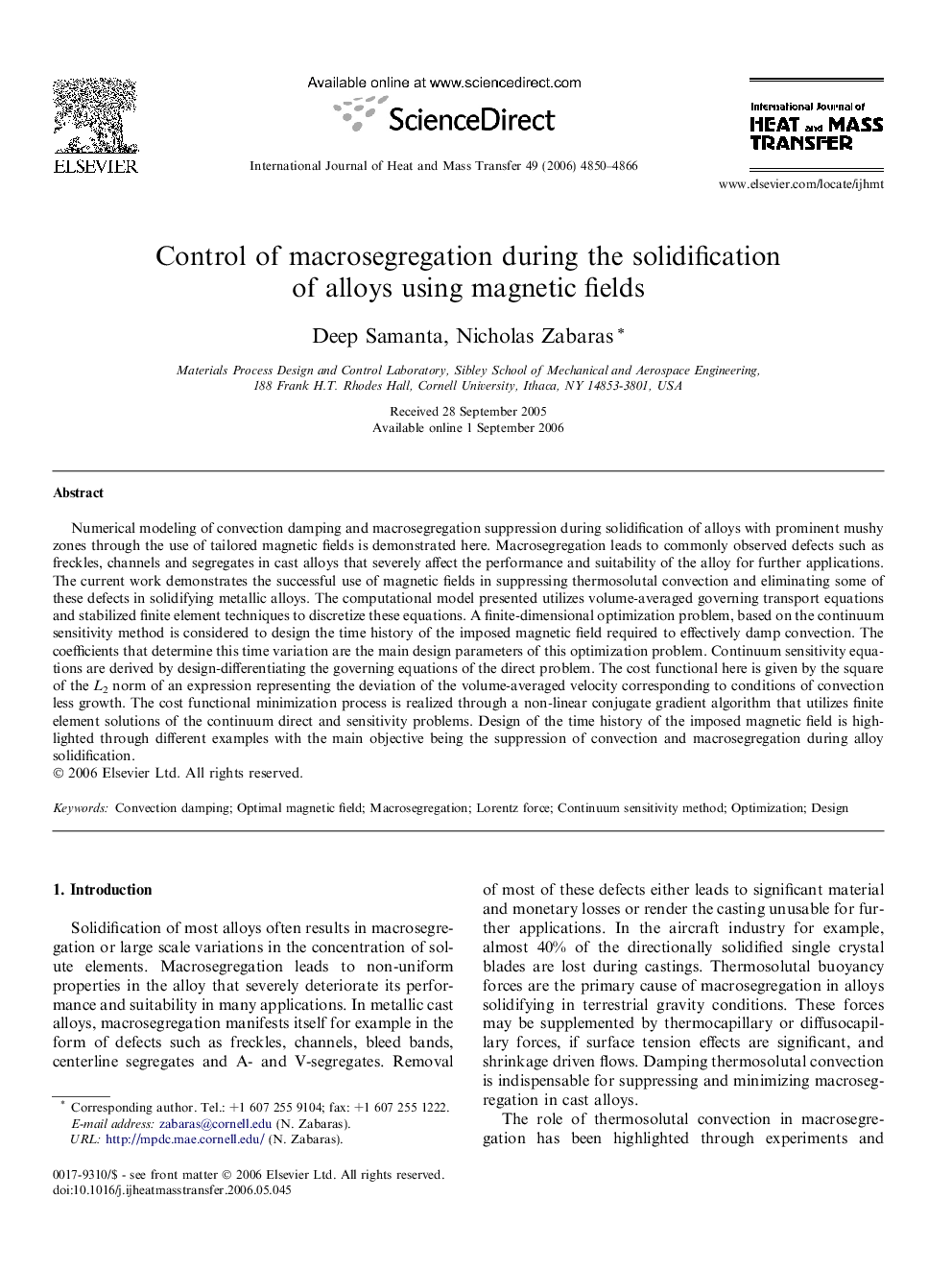| Article ID | Journal | Published Year | Pages | File Type |
|---|---|---|---|---|
| 663377 | International Journal of Heat and Mass Transfer | 2006 | 17 Pages |
Numerical modeling of convection damping and macrosegregation suppression during solidification of alloys with prominent mushy zones through the use of tailored magnetic fields is demonstrated here. Macrosegregation leads to commonly observed defects such as freckles, channels and segregates in cast alloys that severely affect the performance and suitability of the alloy for further applications. The current work demonstrates the successful use of magnetic fields in suppressing thermosolutal convection and eliminating some of these defects in solidifying metallic alloys. The computational model presented utilizes volume-averaged governing transport equations and stabilized finite element techniques to discretize these equations. A finite-dimensional optimization problem, based on the continuum sensitivity method is considered to design the time history of the imposed magnetic field required to effectively damp convection. The coefficients that determine this time variation are the main design parameters of this optimization problem. Continuum sensitivity equations are derived by design-differentiating the governing equations of the direct problem. The cost functional here is given by the square of the L2 norm of an expression representing the deviation of the volume-averaged velocity corresponding to conditions of convection less growth. The cost functional minimization process is realized through a non-linear conjugate gradient algorithm that utilizes finite element solutions of the continuum direct and sensitivity problems. Design of the time history of the imposed magnetic field is highlighted through different examples with the main objective being the suppression of convection and macrosegregation during alloy solidification.
